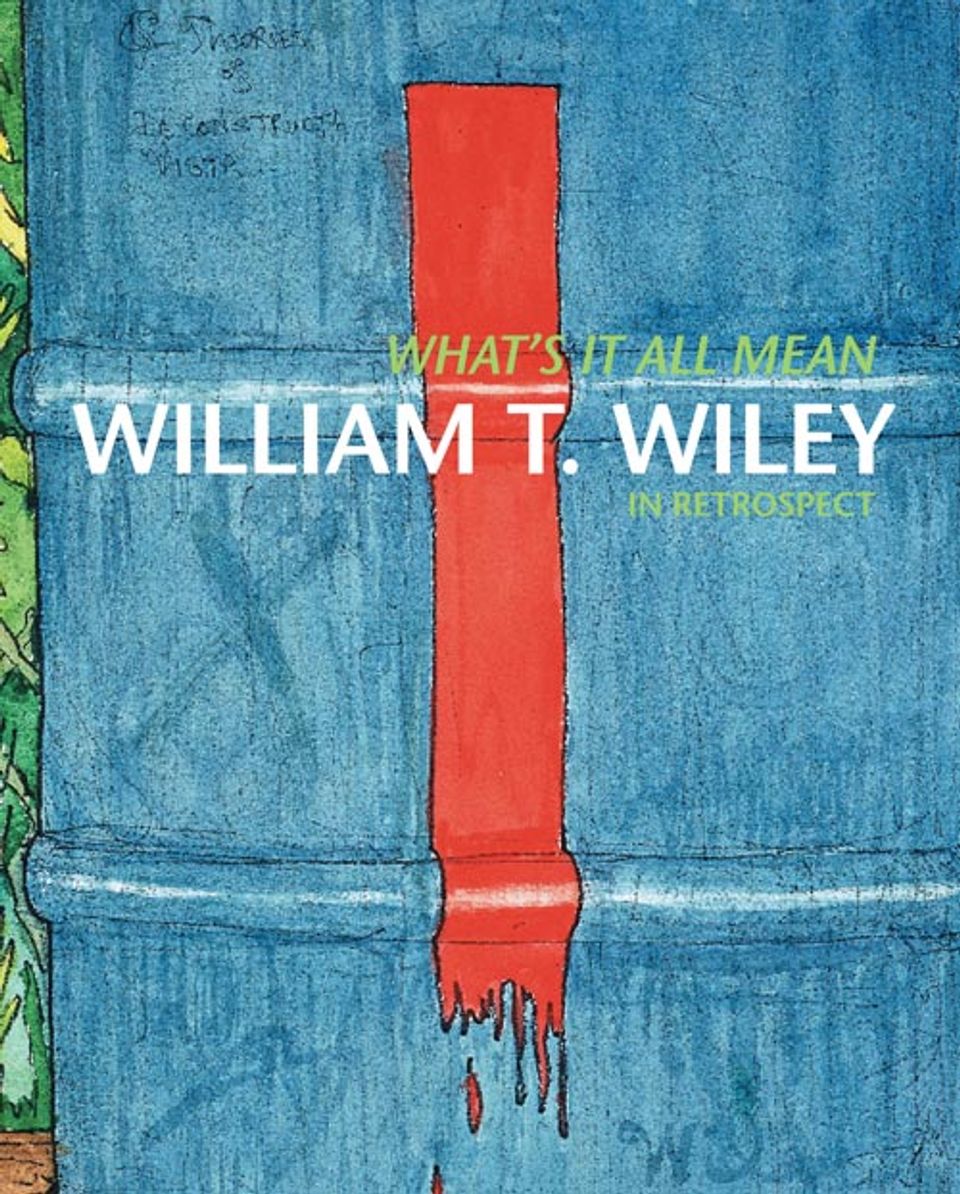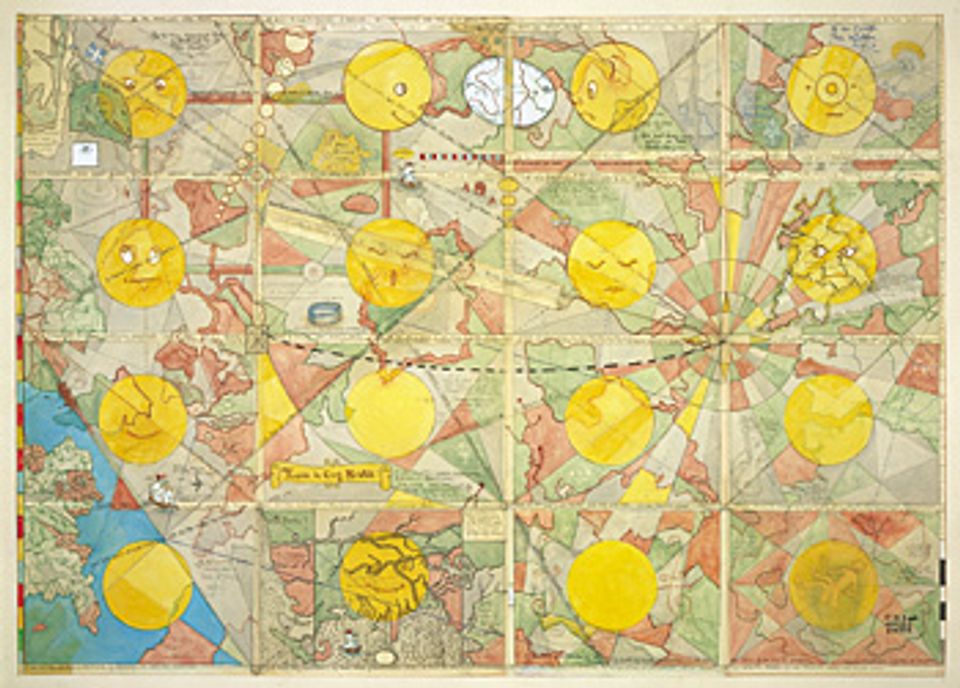
What's It All Mean: William T. Wiley in Retrospect
Over a period of fifty years, William T. Wiley has distinguished himself by creating an extensive body of work that challenges the precepts of mainstream art. Making art that is at once witty and serious, topical and discursive, Wiley’s practices range from traditional drawing, watercolor, acrylic painting, sculpture, printmaking and film, to performance, constructions of assorted materials, and more recently, printed pins and tapestries. Wiley enjoyed great success early in his career with international exhibitions and a worldwide audience in the 1960s and early 1970s. Yet as “minimal” and “cool” prevailed on the East Coast, he was often referred to as a California “funk” regionalist. What’s It All Mean: William T. Wiley in retrospect includes essays by Joann Moser, John Yau, and John G. Hanhardt that place the artist’s works within a biographical context, assess Wiley’s distinctive use of language, and reflect on Wiley’s films of the 1970s.
Reviews in Brief
“At last we have a book that reveals the enigmatic genius of William Wiley, an artist who has persisted in these cynical times to probe the painful and preposterous aspects of our society with his own blend of satiric wit, compassion, and poetry.”
—Susan Landauer, author of The San Francisco School of Abstract Expressionism
or write to PubOrd@si.edu
Product Details
- Co-Publisher
- Copublished with University of California Press
- Year Published
- 2009
- Subjects
- Pages
- 226 pp.: ill. (120 color)
- ISBN
- Hardcover: 978-0-520-26120-4
- Softcover: 978--0-520-26121-1
- Dimensions
- 9 1⁄2 x 11 1⁄4 in.














